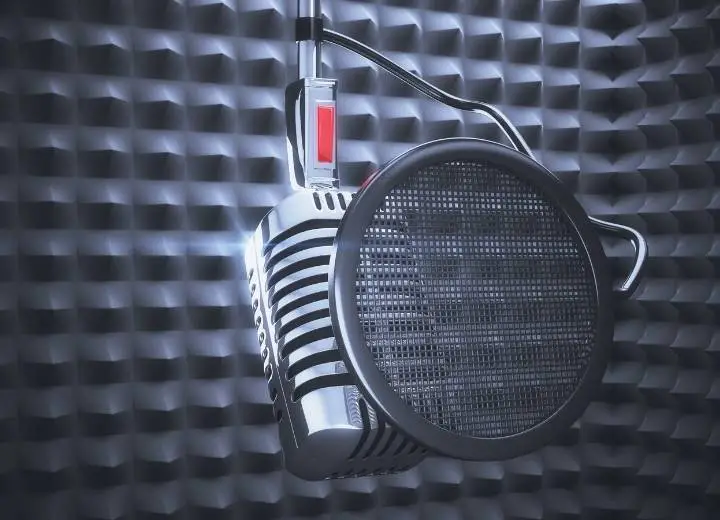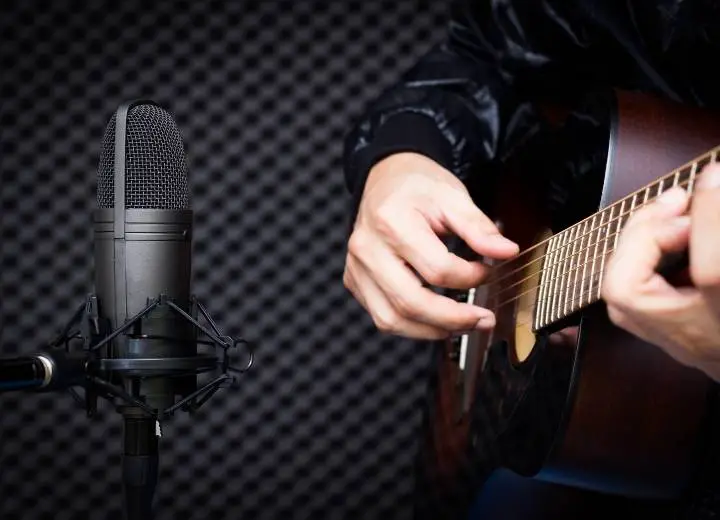
When it comes to building recording studio walls, you need to consider two main goals. It is the ability to block outside noise and absorb internal noise.
Mixing or recording in a noisy environment can make you uncomfortable, right? Let’s check out the method to build recording studio walls in this article.
How To Build Recording Studio Walls
To build the recording studio walls, you need to choose the right material as well as use acoustic panels or mats.
Some suitable materials for walls are as follows:
- Mass loaded vinyl
- Drywall
Mass-loaded vinyl has very good sound insulation. Thick drywall has a similar effect. In general, they are all great materials for recording studio walls
To optimize the sound in the studio, you should also use acoustic panels or mats. You need to stick them in the reflective areas of the studio.
In the rest of this article, we will dig deeper into the importance of wall materials for your recording studio. In addition, we will also look at how to optimize the sound in the studio
The importance of walls in your studio studio
Building a recording studio requires a huge amount of money. You need to search for the perfect audio device. In addition, you also need to pay attention to the construction of the wall. Specifically, you need to choose the right material to build the wall.

To understand the importance of studio walls, you need to understand how sound works in the studio first. Specifically, there are two ways that sound travels in a studio.
- Direct sound: It is a sound that anyone can hear immediately through the ear.
- Reflected sound: This is sound that bounces off surfaces like walls, floors, and ceilings.
In fact, reflected sound will reach your ears later because it travels a longer distance. It leads to undesirable effects such as echo. They have a negative effect on your recording and distribution.
Your recording studio needs soundproofing to eliminate unwanted sounds. Therefore, choosing the right material for the wall is very important. In addition, you should also apply some acoustic treatment methods.
Soundproofing foam – Great solution for recording studio walls
Soundproofing foam includes sound-absorbing foam and sound blocking foam. In fact, people often use soundproofing foam for recording studios, theaters, and cinemas, and more.
Sound absorbing foam and sound blocking foam both have different properties and uses. In essence, you cannot use them interchangeably.
We will learn more about these two types of foam.
1. Sound blocking foam
Sound blocking foam has the ability to prevent noise from traveling through the wall. Sound blocking foam has completely different properties than sound absorbing foam. Sound blocking foam is heavier and more massive.
Sound blocking foam comes with a closed-cell structure. The denser and thicker the acoustic foam, the better its ability to block noise.
If you have to build a recording studio near a noisy area, it is important that you prevent noise from entering the studio. In that case, sound-blocking foam is a great choice.
It is useful in preventing noise from traveling through walls, floors, and ceilings into the interior. If your problem is outside noise, sound-blocking foam is a perfect solution.
2. Sound absorbing
The main feature of sound-absorbing foam absorbs sound.
If you step into an enclosed space and scream, you will get an echo back. It is the result of sound bouncing off the walls, ceiling, and floor into the room.
Unlike sound blocking foam, sound-absorbing foam is usually softer and lighter. Besides, the sound-absorbing foam comes with a flexible and open-cell structure.

Therefore, it has extremely good sound absorption ability. That means sound-absorbing foam helps to eliminate echoing noise from walls, ceilings, floors.
The working mechanism of sound-absorbing foam is very simple. It can convert sound energy into heat. Thanks to that, it can absorb sound to minimize the sound waves bouncing back into the room. It can improve the sound quality in the studio.
Thanks to the properties of sound-absorbing, people often apply this foam to studio walls.
Other solutions for recording studio walls
In addition to soundproofing foam, you also have many other great options for soundproofing your studio.
1. Fabric
Soundproof fabric is also a popular choice for many studios. In addition to using it for soundproofing, they also used it to make their studio more unique.
2. Fiberglass
In fact, many audio professionals recommend fiberglass for studio soundproofing.
3. Wooden
Perforated wood can also be a great alternative to foam. This method tends to be the choice of those with smaller home recording studios.
4. Bass traps
Bass traps are one of the great sound processing methods. It has the ability to absorb bass frequencies. This is because of the porous structure of the bass trap.
Most studios use bass traps in the walls and corners of the room. There are also many recording studios that use bass traps for the floor and ceiling.
Small-scale studios may not be able to get full coverage panels. Therefore, it is a great choice for them.
5. Acoustic panels
Acoustic panels are typically thinner and cover more surface area than foam. They work best with the mid-range frequency range of the reflected sound. For studios, they often hang acoustic panels on the wall or ceiling.
6. Diffusers
Diffusers are also a great choice for home recording studios. However, it doesn’t seem as popular as bass traps and acoustic panels.
Conclusion
Investing in-studio walls is essential. In fact, there are many different types of materials for your recording studio walls. Before choosing any solution, you need to consider it carefully to make the best choice.
Hopefully, this article contains useful information for you.
